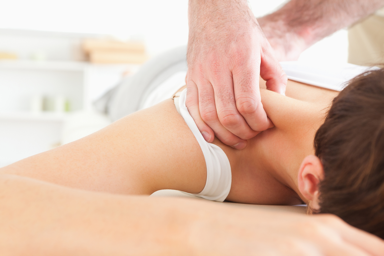The Inner Workings of Effective Massage Therapy in Toronto Revealed

Getting an invigorating massage therapy in Toronto and elsewhere unquestionably feels good. Specialists such as athletes and health professionals have long touted its effects, and for good reason: massage helps reduce pain, facilitate muscle recovery, ease inflammation, and reduce muscle tightness. Several studies even claim that massage therapy is also as potent as painkillers like ibuprofen or aspirin. But how? What goes on behind the scenes, and is there really some sort of “miracle” at work here?
In fact, there’s no “miracle” here, only science. Several researchers believe they have pinpointed the exact inner workings of a massage, using a simple experiment: have a group of people exercise to the point of exhaustion, then facilitate massage therapy to a few select individuals and see how their muscles recover as opposed to those who didn’t receive a massage.
When the results came in, those who underwent massage exhibited a deep cellular change within their muscle tissues: there was an increase in a gene responsible for the production of mitochondria, cell components associated with growth and energy production. Mitochondria is one of the factors responsible for helping muscles recover from activity. There’s also a dampening in the activity of pain-causing proteins known as inflammatory cytokines.
Aside from stimulating mitochondrial production, there’s also a decrease in the amounts of the hormone arginine vasopressin, which restricts blood vessels and raises blood pressure. In fact, certain techniques (deep-tissue Swedish massage, specifically) have been shown to immediately reduce arginine vasopressin levels by as much as 18 percent. This reduction is known to initiate the so-called “relaxation response”, a state in which the pulse and breathing rate slows down and muscles ease their tension.
Once in full swing, the relaxation response also stimulates the production of serotonin, a bodily chemical which positively affects emotion and thoughts, helping facilitate an overall pleasant feeling. Lastly, there’s the decrease of the physical effects of stress and the reduction of stress-related risks such as hypertension, cardiac arrhythmia (irregular heartbeat), anxiety, insomnia, and fatigue, among others.
These bits of information are hard scientific proof that massage therapy is really effective. These results validate massage therapy as a legitimate treatment for pain, inflammation, and muscle recovery. So do yourself a favor and let an experienced RMT from Toronto clinics such as Sage Health and Wellness help you relax fully. With the stress of an average person’s daily life, a soothing massage represents a quick and reinvigorating escape.
Source: How Massage Heals Sore Muscles, New York Times
